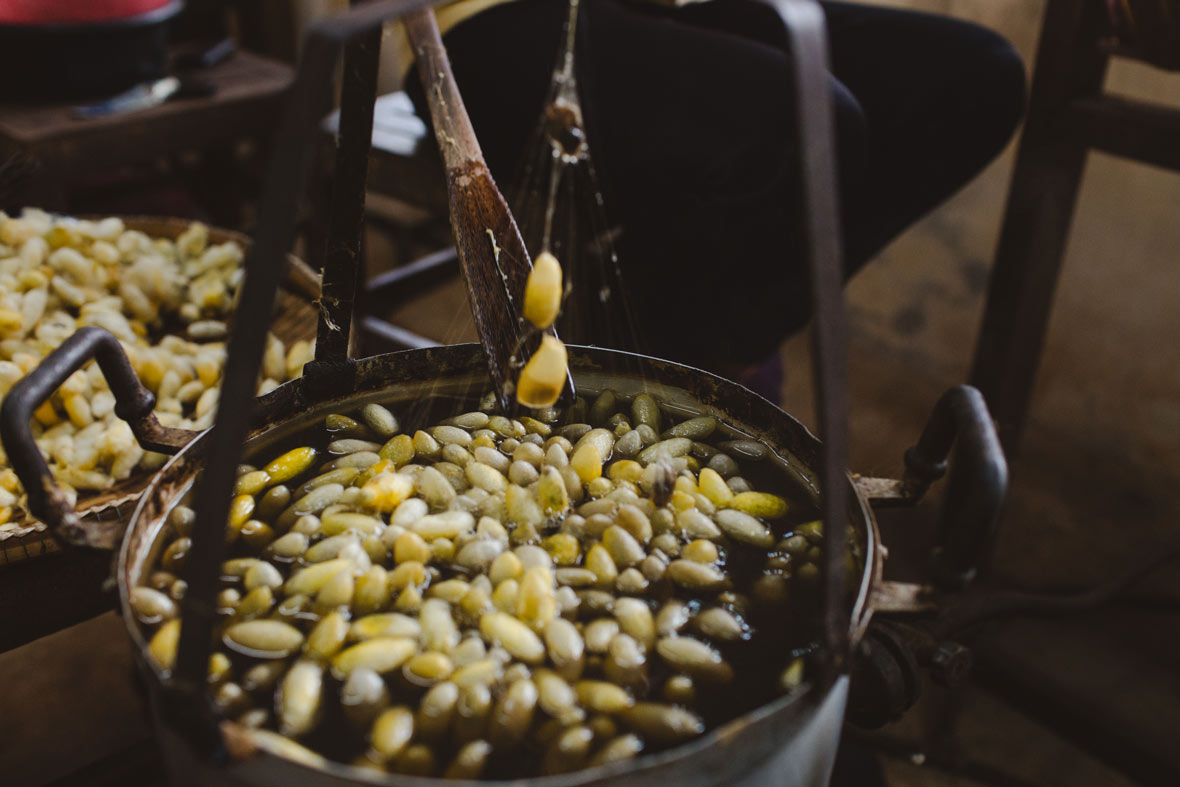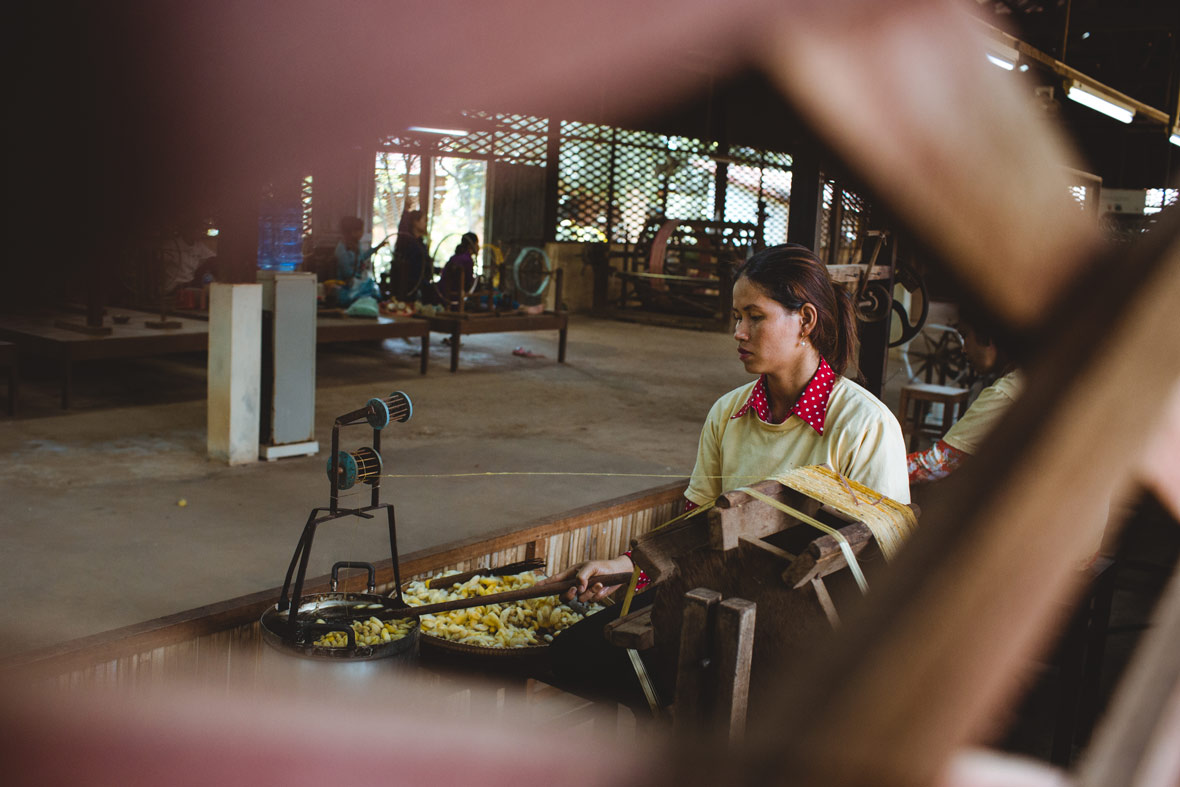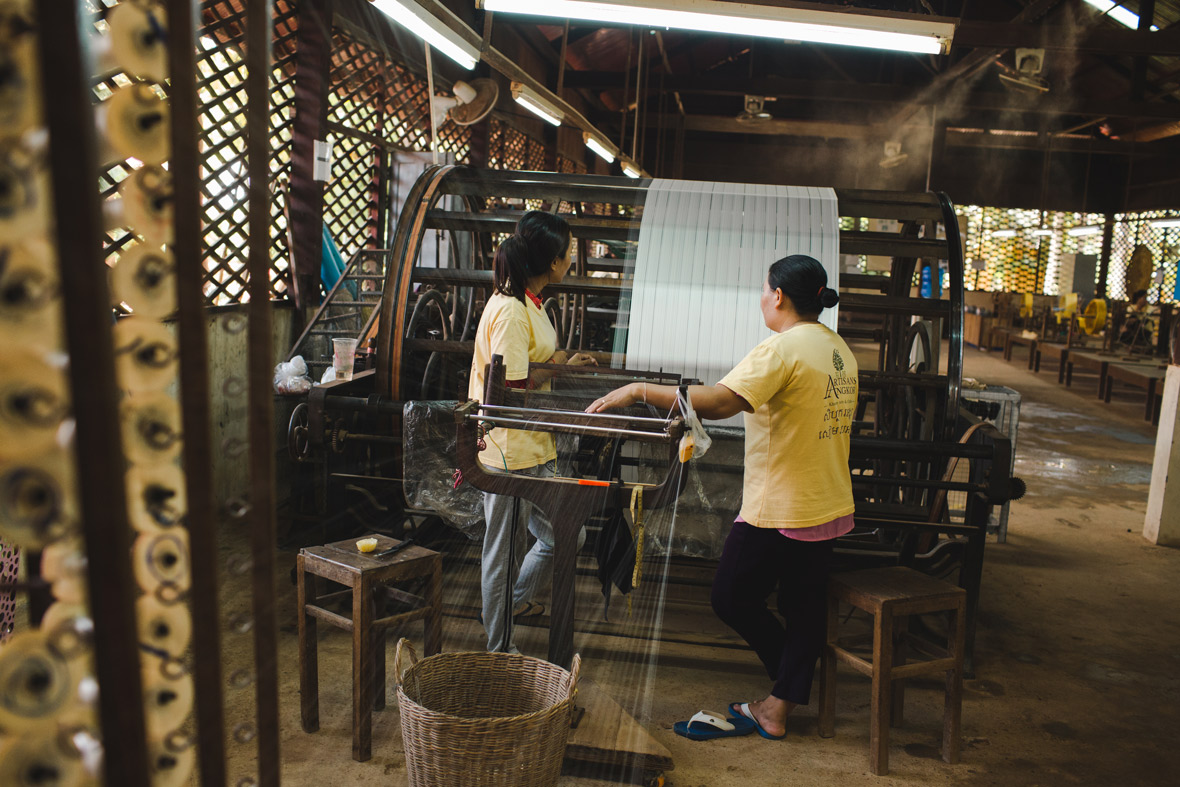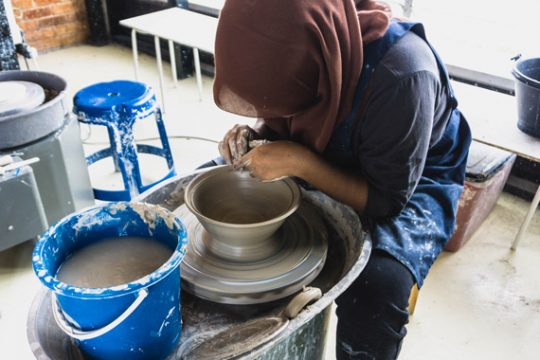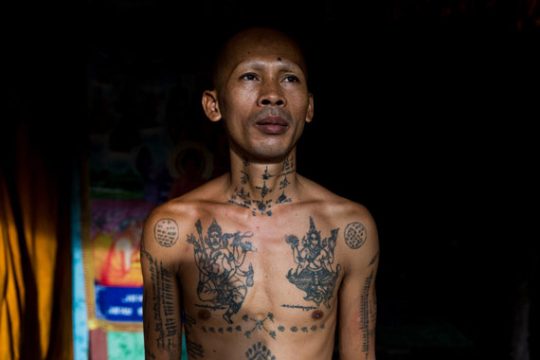无法观看?前往优酷
Just 20 minutes outside of the dusty town of Siem Reap in Cambodia, and away from bustling groups of tourists visiting the Angkor Wat complex, a small farm has quietly revitalized ancient techniques of silk weaving that date back to as early as 4000 BCE. Surrounded by lush rice fields and vast orchards of mulberry leaves, the Artisans Angkor farm is an oasis in this otherwise hot and arid region. The farm was established in the late 1990s when it began recruiting rural women in the surrounding area who lacked formal education and provided training in all facets of the silk-production process, from breeding worms all the way to weaving intricately designed pieces of art. Beginning with just a handful of employees at its inception, today nearly 800 artisans can be found at the farm and its satellite workshops scattered across rural Cambodia.
从柬埔寨暹粒这个尘土飞扬的小镇驱车20分钟,你就能远离吴哥窟建筑群中熙熙攘攘的游客,来到一个安静的小农场,在这里,人们正默默地努力振兴可以追溯到公元前4000年前的古老丝绸编织技艺。在这片炎热干旱的地区,这个名为Artisans Angkor(吴哥工匠)的小农场四周却是郁郁葱葱的稻田和广阔的桑果园,可谓是一片绿洲。农场成立于1990年代末,农场一开始招收周边地区未接受过正规教育的农村妇女来工作,为她们提供从养殖蚕虫到编织复杂艺术品一切有关丝绸生产制作的培训。从刚开始仅有的数名员工,发展到如今拥有将近800名工匠,除了这个农场之外,还在柬埔寨的农村地区开设了众多的小作坊。
The farm is organized as the physical representation of the entire silk production process. As I walk onto the grounds, I first pass through endless lines of thick mulberry bushes that are grown year round as a food supply for the worms. This leads to a large warehouse filled with millions of silkworms that will feed on mulberry leaves until they are moved to wicker trays where they can begin spinning bright orange cocoons that will eventually encase their entire bodies. If you sit quietly and listen, you can even hear a chatter-like sound as the worms voraciously devour the leaves one bite at a time. The final section of the farm is three separate buildings where the cocoons are boiled, unwound, cleaned, dyed, and finally passed along to expert weavers who may spend several months carefully stitching the silk into intricately designed patterns using nothing more than a traditional wooden loom.
这个小农场诠释了丝绸生产的整个过程。进入农场前,我首先要穿过一望无际的茂密桑树丛。这些桑树常年生长着,用来为蚕供应食物。在一个巨大的仓库里,养着数百万条蚕,它们以桑叶为饲料,一段日子后,就会被转移到柳条托盘上,在那里,它们开始吐丝,结出亮橙色的茧,最终将自己的身体完整包裹住。如果你静静地听,你甚至可以听到啁啾不停的声音,那是蚕虫一口一口贪婪地吞噬桑叶的声音。农场的最后一个环节会在三幢独立的建筑里进行,在那里,人们将蚕茧煮沸、松开、清理、染色,最后交由专业编织师花几个月的时间,将蚕丝精心编织成复杂的艺术图案,所用的工具也仅仅是一个传统的木制织布机。
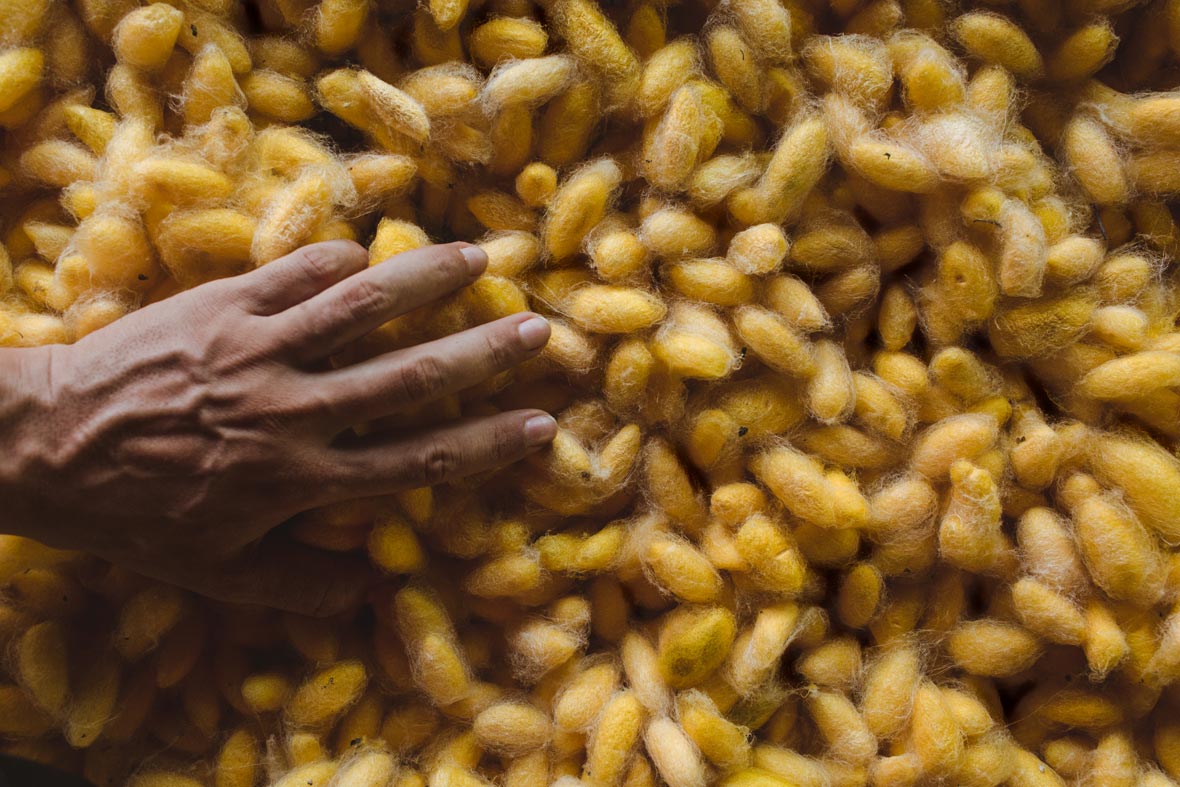
While the process of producing and weaving silk is nothing short of awe-inspiring, the sheer volume of raw materials required to make just a single piece of fabric is almost unfathomable. Each cocoon weighs a mere 70 grams and contains approximately 400 combined meters of raw and fine silk. One medium-sized scarf requires no less than 3,000 individual cocoons, while larger items require as many as 6,000 cocoons. The silk farm keeps 20% of the cocoons that will later transform into moths and ensure a steady reproduction rate of new silk worms, with female moths giving birth to upwards of 300 eggs each.
整个生产和编织蚕丝的过程令人叹为观止,打造一条布料所需原材料的数量更是令人讶异。每个蚕茧的重量仅为70克,包含大约400米精细的生丝。一条中等尺寸的围巾需要至少3000个蚕茧制成,而尺寸再大一些的产品则可能需要多达6000个蚕茧。蚕丝养殖场会保留20%的茧,用来养成蚕蛾,以确保稳定的新生蚕虫繁殖率,每只雌性蛾子一次可以产300只卵。
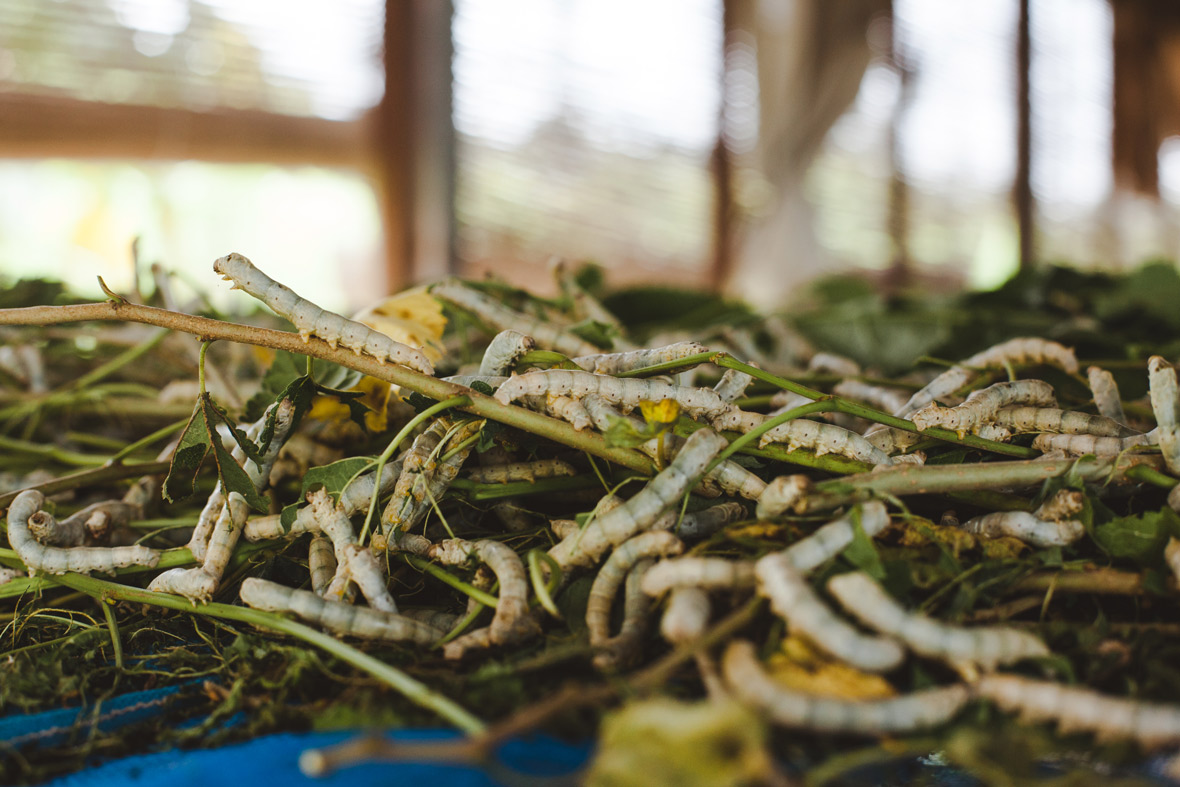
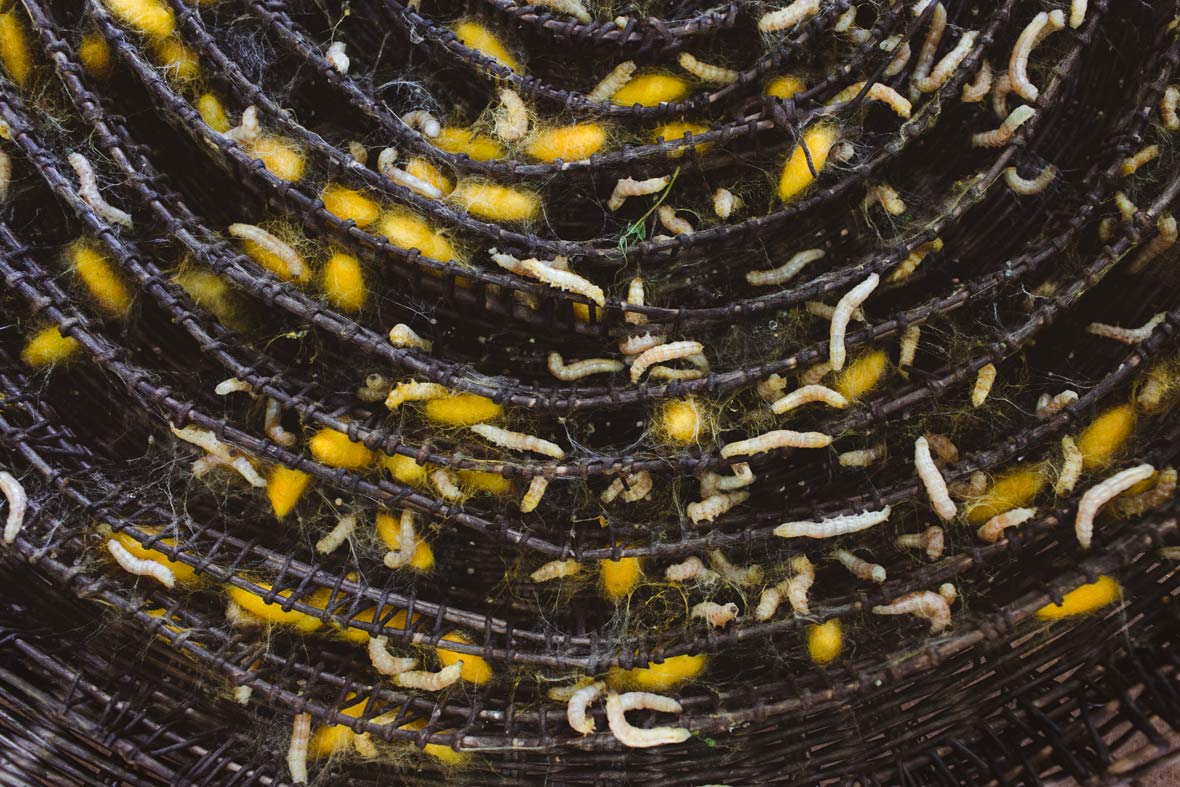
Savuth, one of the farm’s employees, explains to me that while Cambodia may not be a silk powerhouse like India or China, silk weaving is a tradition that runs deep in numerous rural Cambodian households. “My grandma, grandad, and mom also did silk weaving. Just the three of them, they planted the bushes, dyed the colors, and wove scarves. One scarf with just three people would take almost five months,” he says. As a child, Savuth was responsible for caring for the mulberry bushes and making sure the silkworms were well fed, which led to an affinity for worms one usually would associate with a pet dog or cat. “I still play with the worms every day. I like them very much,” Savuth tells me with a grin on his face.
农场的雇员之一Savuth向我解释说,虽然柬埔寨在产丝规模上可能不如印度或中国这样的丝绸强国,但丝绸编织是许多柬埔寨农村家庭一个流传已久的传统。他说:“我的祖父母和妈妈都会丝绸编织。从种植桑树,染色到编织围巾,全由他们三个人完成。如果仅靠三个人来打造一条围巾,可能需要将近五个月的时间。”小时候,Savuth负责照料桑树丛,确保蚕每天能吃饱,所以他和蚕之间逐渐产生了深厚的感情,在他眼中,蚕就是他的宠物,像一般家庭的宠物狗或猫一样。“我现在每天还会逗蚕虫玩,我非常喜欢它们。”Savuth告诉我时,脸上露出了笑容。
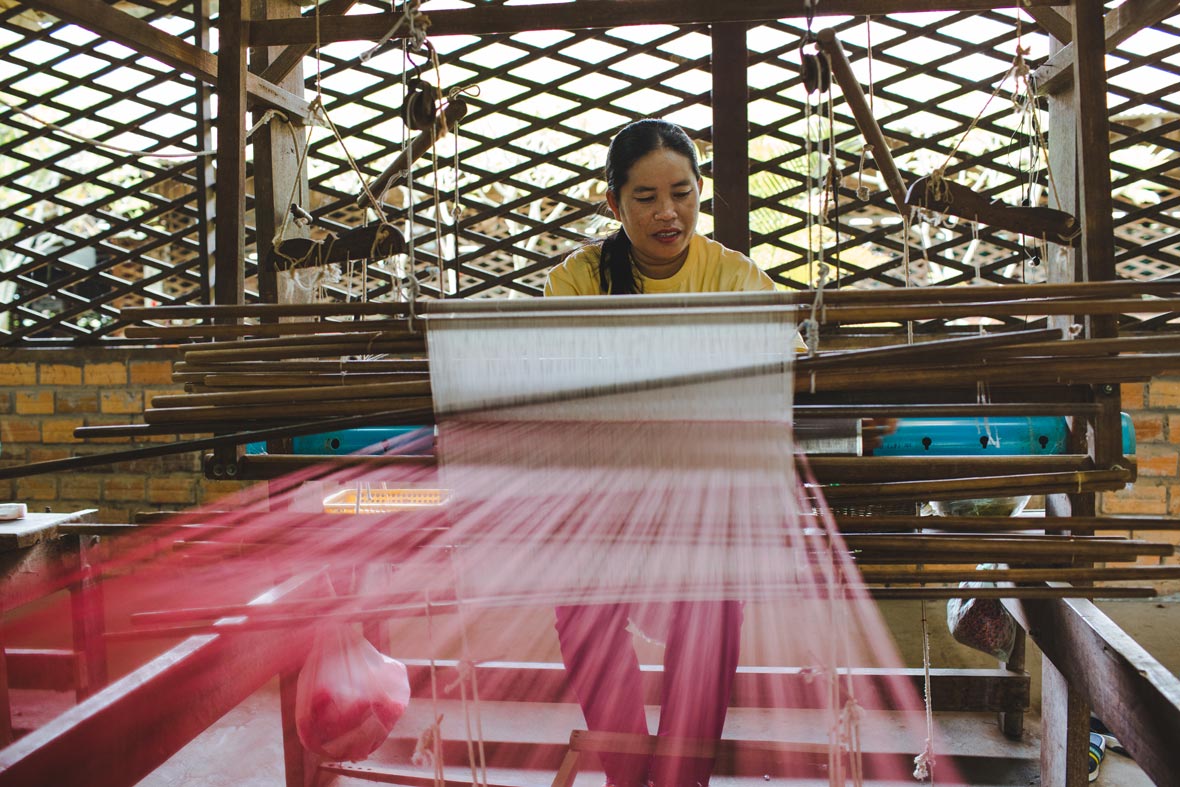
The influx of foreign investment into Cambodia is resulting in a rapid transformation of societal values, where speed and efficiency are swiftly taking the place of craft and tradition. And while Cambodia’s large textile factories are bringing newfound economic gains, the small silk workshops in the country’s sprawling rural areas continue to preserve one of Cambodia’s oldest and most celebrated crafts.
越来越多进入柬埔寨的外国投资,导致社会价值观迅速转变,速度和效率取代了手工艺和传统。虽然柬埔寨的大型纺织工厂正在带来新的经济收益,但在这个国家广袤的农村地区,小型的丝绸作坊仍保留着柬埔寨最古老和最著名的工艺之一:缫丝,并也将继续留存下去。
Website: www.artisansdangkor.com
Facebook: ~/ArtisansAngkor
Instagram: @artisansangkor
Contributor, Photographer, and Videographer: Jeremy Meek
网站: www.artisansangkor.com
脸书: ~/ArtisansAngkor
Instagram: @artisansangkor
供稿人,图片摄影师与视频摄影师: Jeremy Meek



